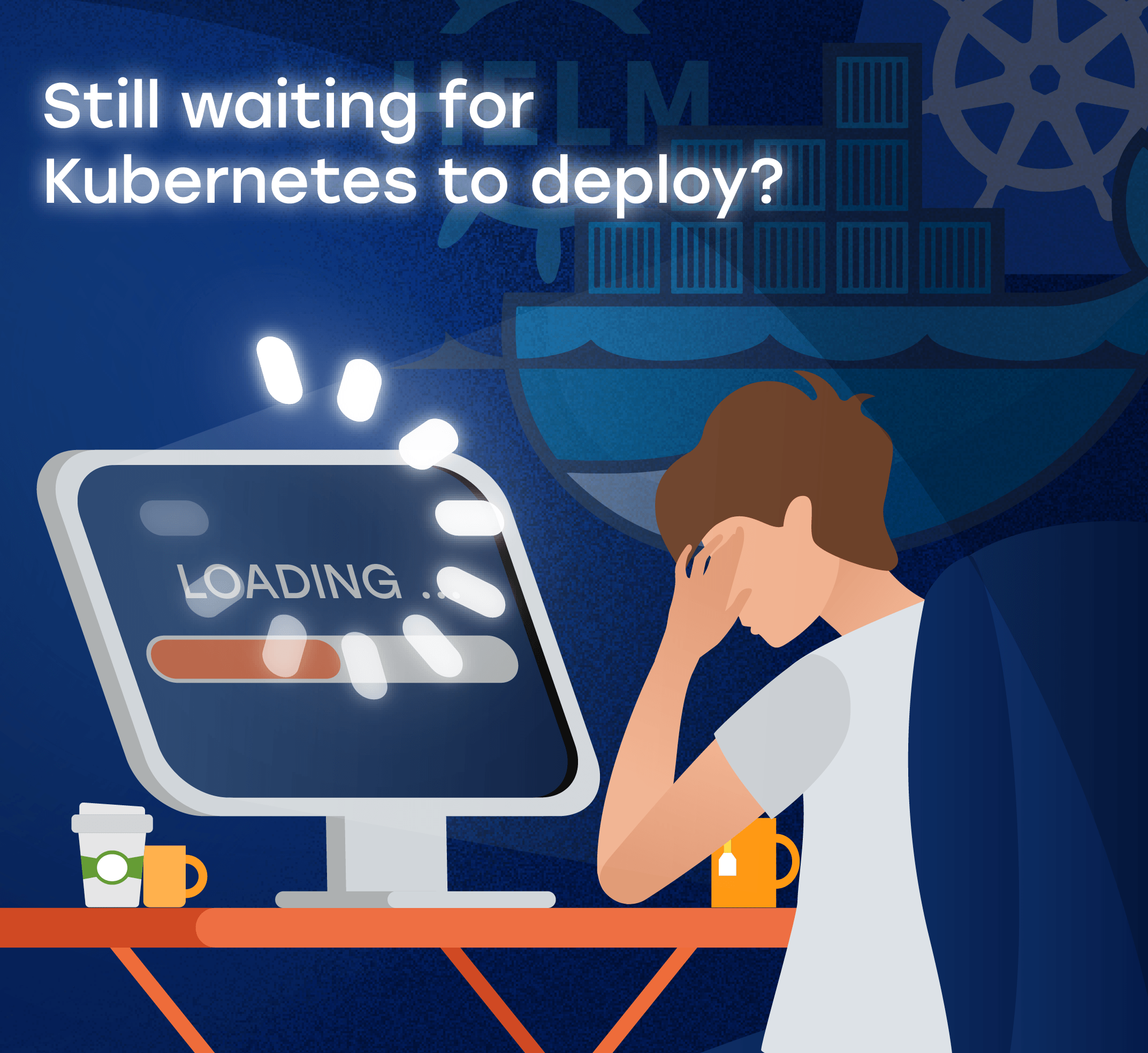DevOps Services

DevOps as a service
There is no need for you to spend time and money on hiring a team of engineers and going through the long recruitment process that can be pretty expensive – you can delegate all challenges and tasks to seasoned professionals instead. Our experts enable this by combining the most suitable DevOps practices and advanced tools — and all of them are ready to provide your business with cost-efficient solutions, automated workflows, and continuous integration and delivery.
Cloud-based software development
Continuous delivery workflows shorten the time-to-market for new product features and increase the reliability and performance of your IT infrastructure. We use cloud-based DevOps tools to make software development predictable and reliable.
IT infrastructure implementation and optimization
IT Svit has 17 years of experience with maintaining IT infrastructure in general and more than 5 years of experience building automated cloud infrastructures using DevOps practices and technologies, so you can rest assured that the team of professionals will come up with cost-efficient solutions that match your company’s needs & goals.
Dedicated IT infrastructure management
IT Svit has a thorough understanding of how to optimize and run any kind of IT infrastructure — from bare-metal servers to cloud-based systems. We are ready to use our ample experience to help you implement the latest best practices of cloud infrastructure management. Together, we’ll establish a long-term cooperation that will add value to each process inside your company and provide you with the assistance you need to keep reaching new horizons and achieving better results.
Benefits of DevOps Services
The Challenges That We Solve
- Lack of reliable and experienced engineers
- Insufficient automation
- Costly infrastructure support
- Unbalanced workflows and increased workloads
Benefits of DevOps solutions from IT Svit
- Affordability
- Custom-made cloud logging and monitoring solutions
- Full automation of business processes
- A talented team of professionals at your disposal
- Flawless cloud transition and migration
- Assistance with projects of any scale
Ready to start DevOps project?
Our team has been assisting companies for over 18 years, making sure that every business gets an opportunity to enhance their workflows and unleash their full potential.
Our DevOps Transformation Stages
DevOps transformation — the way to reliable and cost-efficient IT operations.
Step 1: Defining Your Business Needs
The journey of DevOps Transformation begins with a clear understanding of your unique business requirements. Our primary goal is to support you in achieving your intended outcomes and to accomplish this, we prioritize comprehending your specific needs and gaining a better understanding of your business specifics.
Step 2: Exploring Systems and Workflows
Through technical conversations, we delve into your existing systems and workflows. Our objective here is to shape your business needs into a comprehensive plan, considering all infrastructure intricacies. This involves an in-depth analysis of your organization. We evaluate your current IT framework, engaging with business stakeholders and IT personnel to gather insights. Our aim is to grasp a comprehensive picture of your systems, workflows, and tools.
Step 3: Planning and Allocating Resources
Following the assessment, our DevOps team collaborates closely with your business stakeholders to create a roadmap for digital transformation. We break down tasks and engage in discussions with your team to ensure mutual understanding. This step clarifies the required specialists and resources for each task. You will receive an estimate of time frames and the resources needed to successfully complete the DevOps transformation.
Step 4: Entering the Development Phase
The development phase is centered around automating business processes. We establish communication and collaboration channels with your team, prioritizing agility and flexibility. While adhering to predefined schedules, we are always prepared to pivot when necessary. Our primary focus remains on alignment, enabled by transparent information sharing. Through daily and weekly sync-ups, we discuss ongoing tasks, progress, and strategies openly.
Step 5: Provide Support and Maintenance
The journey doesn’t end with development. We continue to offer support and maintenance services. This includes sharing knowledge with your teams, safeguarding your IT infrastructure, and providing comprehensive documentation. Implemented changes continue to enhance your workflows, bolstering organizational adaptability. As the market evolves, so does your business. We stand by your side as unwavering companions on this transformational journey, offering consistent support, regardless of the challenges that may arise.
Suggested articles
FAQ
What are DevOps transformation services?
DevOps transformation services are a set of solutions meant to facilitate the seamless integration of every DevOps workflow into the company’s processes. Here are some of the services and instruments we are ready to offer to provide you with all the DevOps benefits:
- Continuous integration
- Agile software development
- Deployment pipeline
- DevOps tools for successful project management
- Collaboration tools
- Release management
- Containerization
- Cloud migration
- Version control
- DevOps consulting
From implementing containerization for DevOps efficiency to leveraging cloud services for DevOps transformation, our DevOps transformation experts at IT Svit are ready to help you out with everything.
What specific challenges can DevOps Transformation Services help my business address?
Our DevOps transformation service provider can help you tackle various tasks and challenges, including:
- Enhancing Collaboration through DevOps
- Automating various manual processes
- Accelerating product delivery
- Detecting security threats and vulnerabilities
- Optimizing resources
Is DevOps Transformation suitable for businesses of all sizes, or is it more geared toward larger enterprises?
The impact of DevOps on organizational productivity is huge regardless of the business’ size and industry. The core principles of DevOps can benefit businesses across the whole spectrum, streamlining software development with DevOps, enhancing scalability, ensuring higher quality releases, and improving many other aspects of business operations.
How can DevOps Transformation Services enhance the speed and efficiency of software delivery?
By working with our DevOps transformation company, you can significantly increase the speed and efficiency of your software delivery process by implementing a set of practices and tools and fostering a DevOps culture. With the help of CI/CD, release orchestration, automation, monitoring, feedback loops, and other practices, it is possible to reduce manual errors and accelerate the development of software.
What role does automation play in DevOps Transformation, and what processes can be automated?
Automation plays one of the biggest roles in DevOps Transformation. From achieving faster deployment cycles with DevOps to reducing the risk of human error, automation has many benefits that can significantly improve all business processes and workflows. Here are some examples of DevOps automation:
- DevOps monitoring and logging
- Continuous integration
- Continuous delivery
- Testing
- Provisioning
- Security scanning
- Release management
- Compliance and auditing

Dmytro Medvediev
CTO & Cloud Architect



